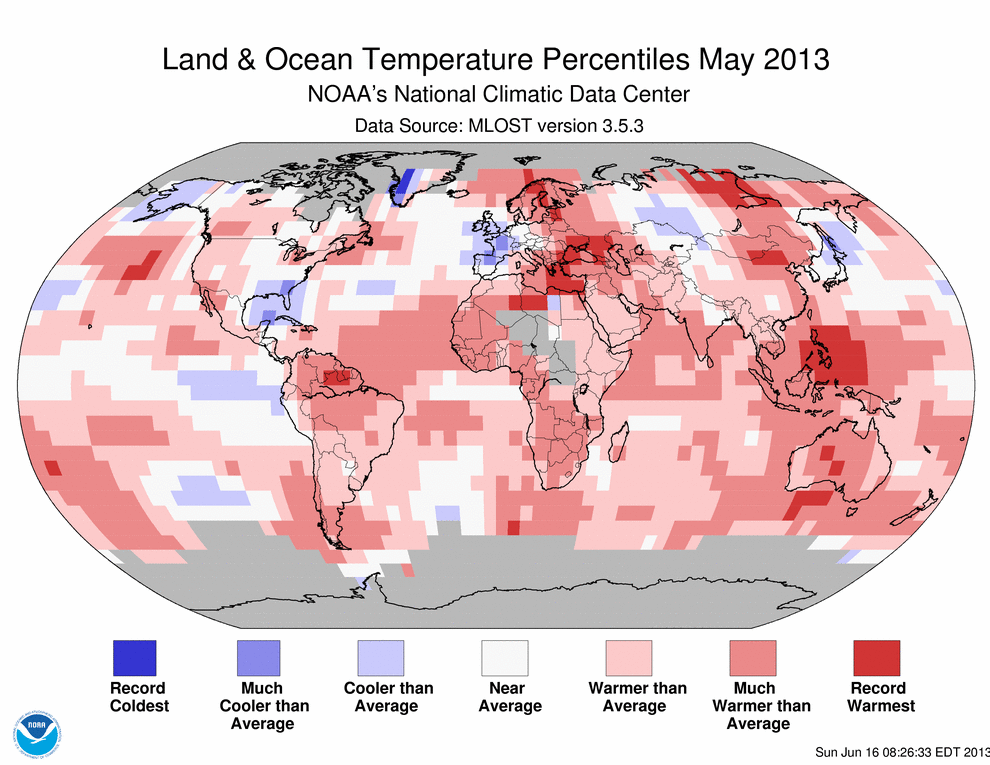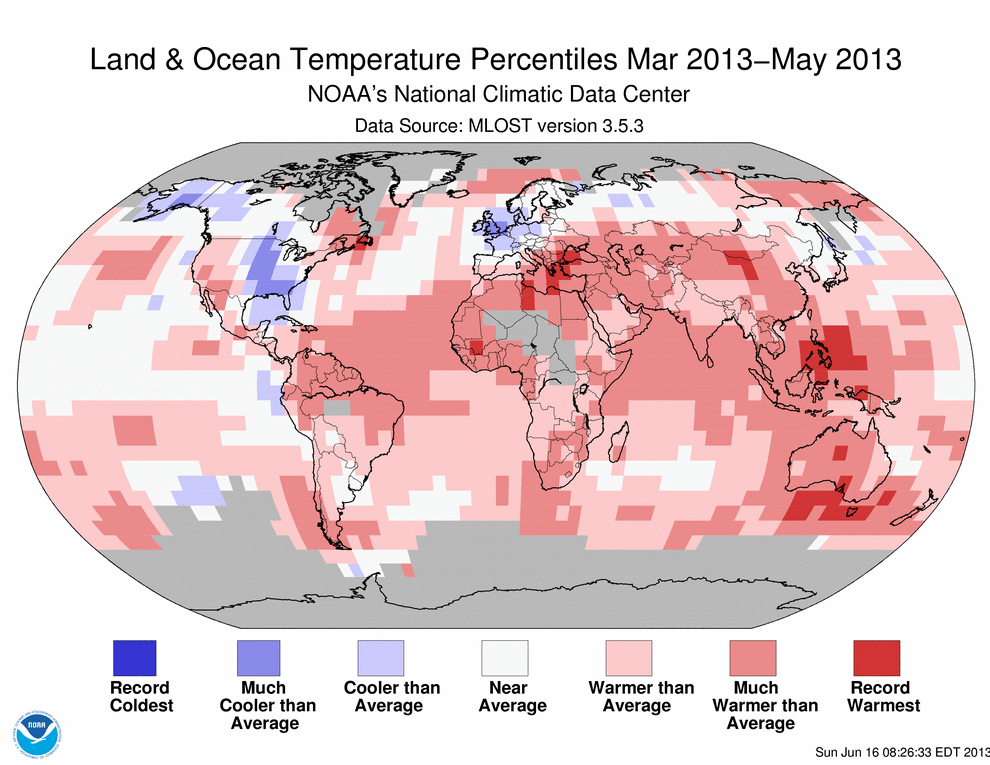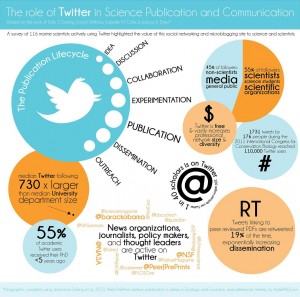I’m teaching my Global Environmental Change this semester and the students have been busy reading and putting together response papers to the readings. This past week, I asked the students to find a news article published in 2013 about climate change. Not a hard search really, but I also asked them to evaluate or talk about how they evaluated the expertise of the author of the article. Many of the articles below give a glimpse into what students are thinking about with climate change. Here is the list:
Hurricanes striking coast could decrease with global warming
Cooling Pacific dampened global warming
Summary of IPCC AR5 panel findings
Pacific allies in fight against climate change
Climate change policies in Europe and adverse impacts on African agriculture
Is global warming slowing down?
An advocacy piece centered on Hardball interview with Professor Michael Mann and a Republican strategist
Climate sticker shock related to Arctic melt
Record temperature in Greenland
Germany’s energy outlook
Gulf Stream slowdown linked to faster rate of sea level rise on USA East Coast
Climate change impacts on the energy infrastructure
Global warming primer
MTV rocks the POTUS SOTU 2013 party
Carbon farms reversing global warming
Pause in global warming should not translate to pause in action
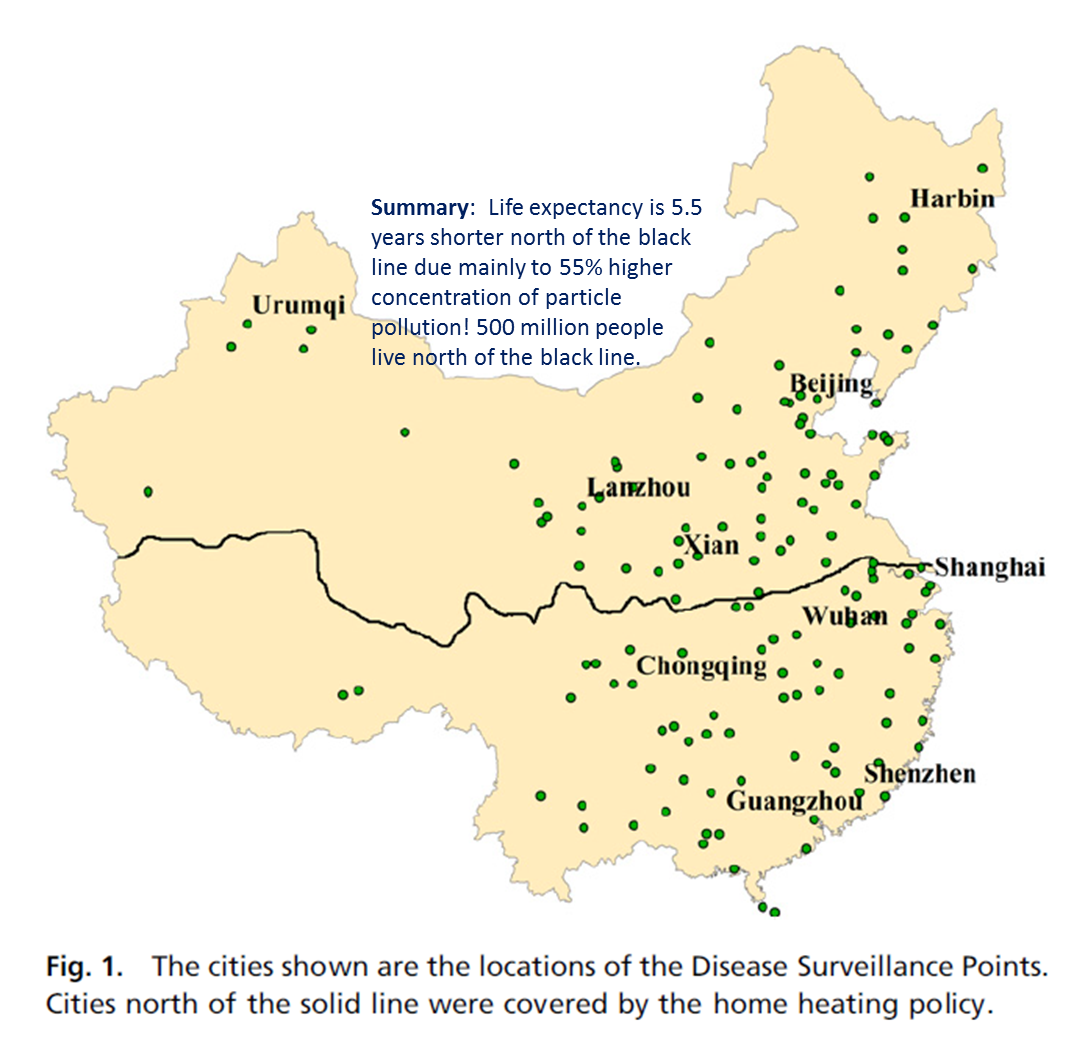










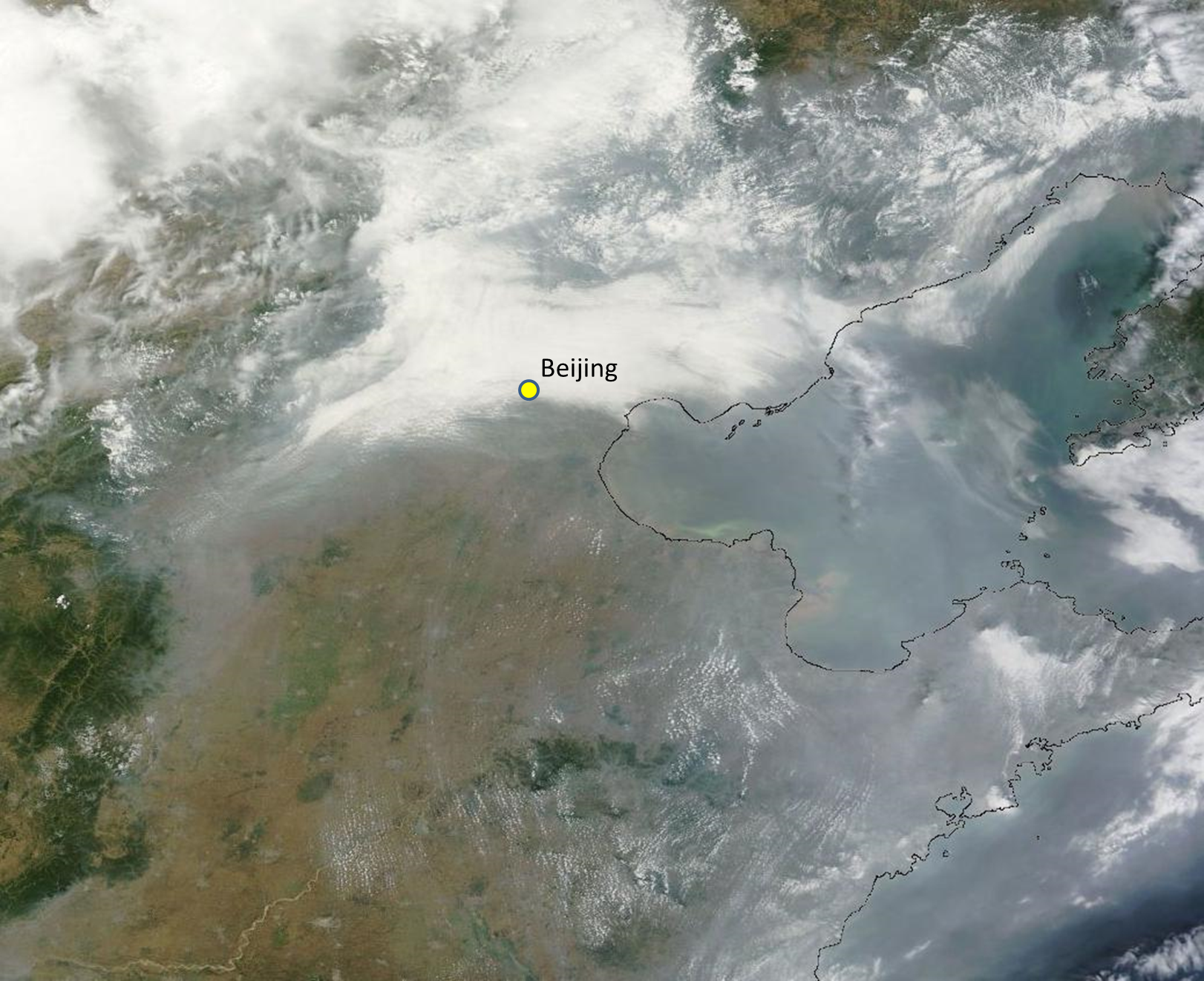
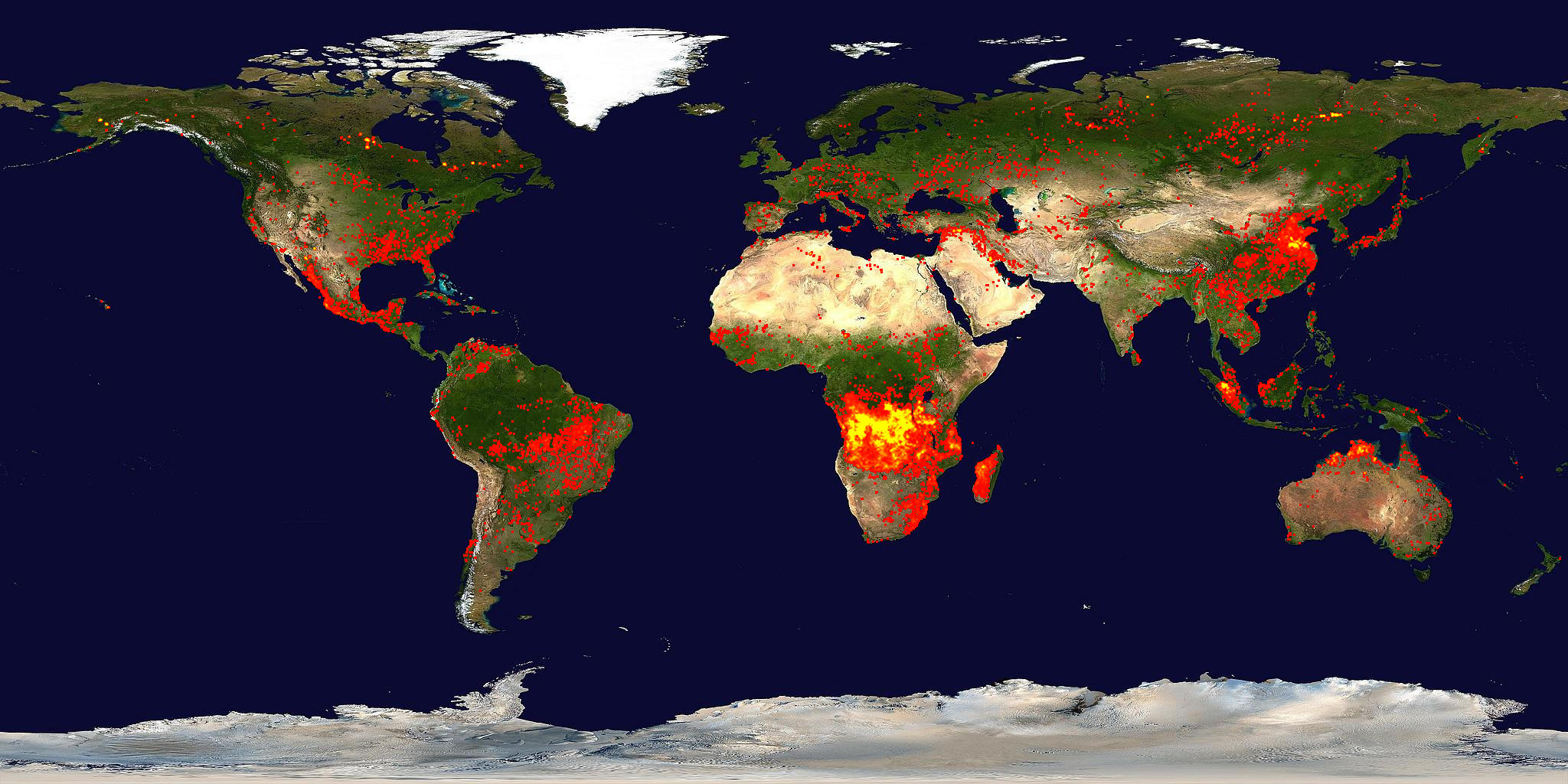


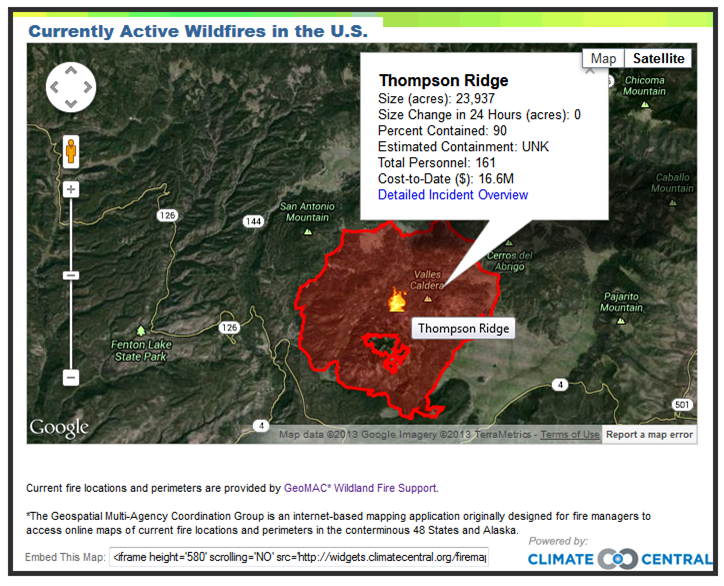 Go to their
Go to their  Over long time scales, of course there are a number of possible reasons (changes in the Sun, Earth’s orbital shape/proximity around the Sun, plate techtonics), but these take so long, they aren’t relevant to the concept of global warming. Even my statement that What on Earth could warm an entire planet? should be more precise and say something like What on Earth could warm an entire planet over a relatively short time period? The simplest, if somewhat incomplete, answer is the combination of greenhouse gases and aerosols emitted into the atmosphere from human activities. Period.
Over long time scales, of course there are a number of possible reasons (changes in the Sun, Earth’s orbital shape/proximity around the Sun, plate techtonics), but these take so long, they aren’t relevant to the concept of global warming. Even my statement that What on Earth could warm an entire planet? should be more precise and say something like What on Earth could warm an entire planet over a relatively short time period? The simplest, if somewhat incomplete, answer is the combination of greenhouse gases and aerosols emitted into the atmosphere from human activities. Period.